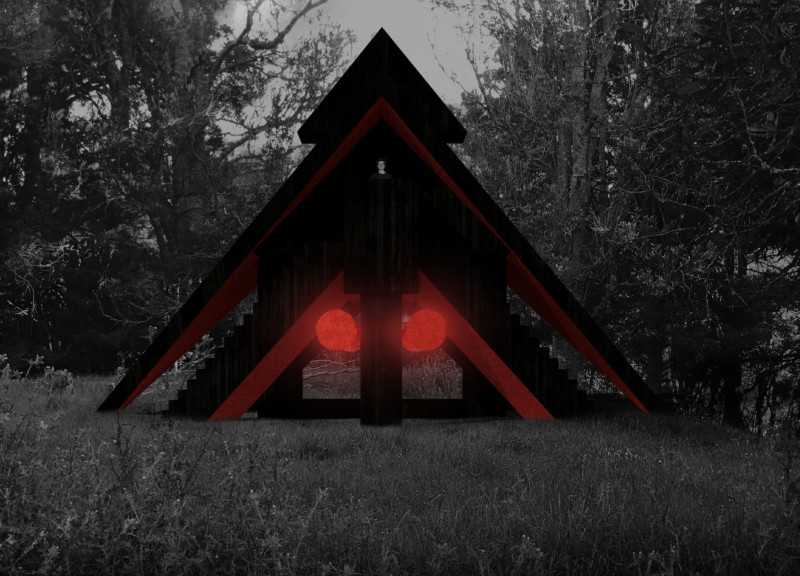5 key facts about this project
The Primitive Hut is a meditation space designed to promote connection with nature and cultural identity, set against a backdrop of greenery. With roots in primitive architecture and influences from Maori tradition, the project creates an environment conducive to reflection and mindfulness. The design concept focuses on merging built space with the natural world to encourage a deeper meditation experience.
Architectural Inspiration
The design incorporates the primitive hut, characterized by its simple framework of vertical columns and horizontal beams that form a straightforward structure. These primary elements are accompanied by triangular walls, emphasizing minimalism and functionality. The form engages users by fostering a direct relationship with the surrounding landscape, allowing for personal contemplation and insight.
Cultural Elements
Elements of the wharenui, a traditional Maori meeting house, are woven into the design, enriching the cultural narrative. Various components represent parts of the human body. The tekoteko carved on the roof signifies the head, while the maihi symbolizes arms and the raparapa represents fingers. These aspects connect the space to ancestry, reflecting cultural identity and community values through physical structures and shapes.
Spatial Configuration
The V-shaped sloping roof creates two distinct levels within the hut. The open first level provides a space for interacting with the outdoors, while the enclosed second level offers privacy for meditation. Staircases that lead in multiple directions enhance accessibility, allowing for smooth transitions between the two areas. This configuration promotes a sense of unity and encourages users to move freely through the space.
Functional Details
The design features a platform with two functional pedestals at the north and south ends. One pedestal is dedicated to drying essential oils, while the other collects rainwater. These practical elements demonstrate a commitment to sustainability, integrating useful functions with the overall design.
The exterior is coated with Vantablack, which helps the structure harmonize with its natural surroundings. Inside, the space is painted red, a color meaningful in Maori culture, adding depth to the experience. Together, these features reinforce the connection between architecture, nature, and cultural heritage, creating a tranquil place for meditation and self-discovery. The hut invites individuals to engage fully in their practice, fostering a deep connection to both self and environment.






















































